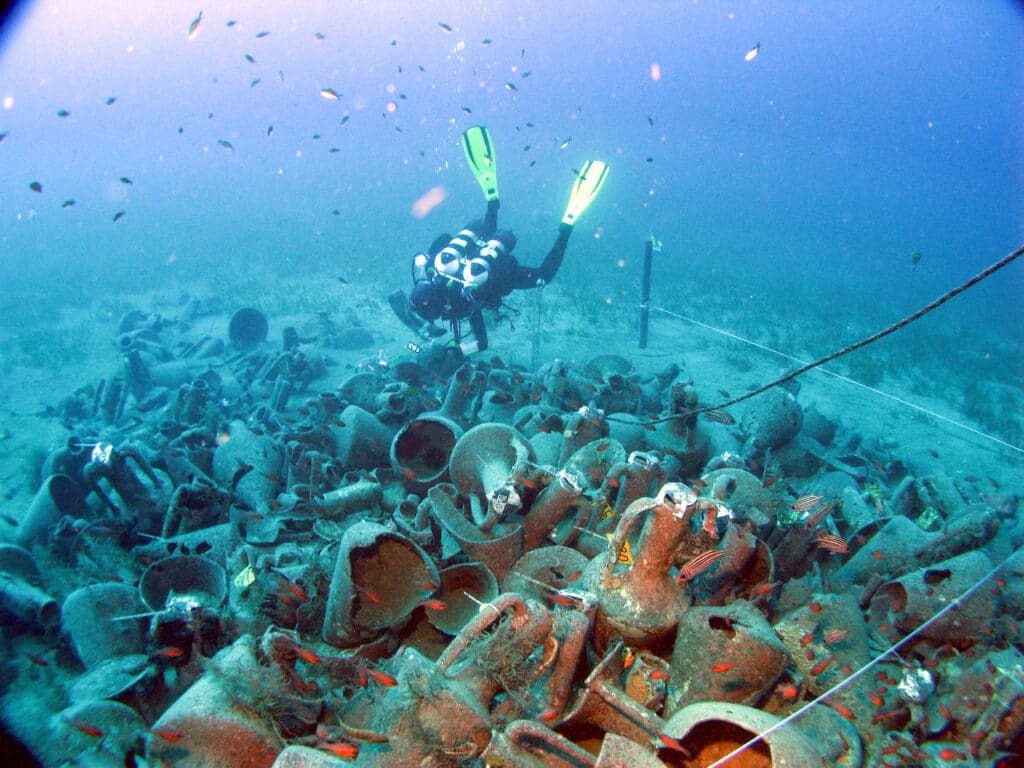Deep sea shipwrecks in Cyprus and China shed light on trade routes of history finds PAUL LAMBIS
When China started its underwater archaeological explorations in the 1980s, most of its missions were carried out in shallow coastal areas 40 metres below sea level. However, the government has recently completed two deep-sea archaeological investigations, which have opened a new chapter in the country’s deep-sea archaeology.
The recent discovery of over 200 cultural relics dating back 500 years from the site of two ancient shipwrecks beneath the waters of the South China Sea is a significant archaeological find, containing thousands of porcelain cups and vases that offer a glimpse of global trade during the Ming Dynasty (1368-1644).
According to director of the National Cultural Heritage Administration’s archaeology department Yan Yalin, the discovery reaffirms historical facts that Chinese ancestors developed, used and travelled to and from the South China Sea. “It contributes to the research on China’s maritime history, ceramic history, overseas trade history and study on the Maritime silk road,” Yalin said.
“Among the discoveries were an iron anchor measuring approximately one metre in length, a box that appears on first inspection to be made of wood, two pieces of timber and various ceramic items, such as a blue-and-white porcelain jar, a blue-and-white porcelain dish and a white-glazed bowl.”

The antiquities found in China
While discoveries in China resurrect the prosperous maritime trade during the mid-Ming Dynasty, serving China’s ancient maritime silk road trade and cultural exchanges, shipwrecks discovered in Cyprus have also provided the world with a glimpse into past life in the Mediterranean.
The discovery of the Mazotos shipwreck off the coast of Cyprus in 2006 offered new light on sea routes and trade between Cyprus and the Aegean during the late Classical period.
Since November 2007, the Archaeological Research Unit of the University of Cyprus has been exploring the wreckage underwater in collaboration with the department of antiquities, uncovering relics of wine amphorae primarily from Chios but also from other northern Aegean islands.
“The Mazotos vessel is thought to be one of the region’s best-preserved wrecks, and its relics are linked to two prominent seafaring people, the Greeks and the Phoenicians,” the antiquities department said.
“Most of these amphorae were probably carrying wine but at least one was full of olive pits, possibly for consumption by the crew,” a spokesperson added.
To undertake China’s archaeological research, a collaborative archaeological team of about 30 individuals was assembled comprising archaeologists and experts in geophysics, marine geology, marine biology and electromechanics, who mounted a three-stage archaeological study.
The wide extent of the archaeological discoveries at a depth of 1,500 metres in the South China Sea presented challenges “as there was no one to turn to for guidance of such a project,” expert in geophysical prospecting and the mission’s deputy head Chen Chuanxu said.

Some of the items find in Mazotos
“There has been no previous case in the world of conducting an archaeological investigation on shipwrecks of this scale and depth. The team members had to fend for themselves and forge their own path,” Chuanxu added.
He said the submersible pilots performed tasks such as laser measurement and multi-angle footage recording, as well as collecting samples and artefacts with the robotic hand of the submersible. “The work was carried out with extreme diligence and prudence.”
Although the Mazotos wreck is 45 metres below sea level, the field project has been equally demanding due to the use of digital photogrammetry and computer vision software programmes in the excavation, with the goal of developing a targeted documentation and mapping method of ongoing shipwreck excavations, “so that others can address complex research questions concerning this unique discipline of archaeology,” the University of Cyprus said.
The intricacies and complexities of deep-sea studies of shipwrecks in China and Cyprus can certainly connect people to their cultural heritage, but their discoveries are also significant on a global level, revealing how ancient people of the past lived, how they adapted to their environment, how they used natural resources, and how they changed the world around them.
Each shipwreck’s story is intertwined into the rich tapestry of regional history. Whether diving for pleasure or research, these undersea resources serve as valuable classrooms containing a wealth of knowledge, beauty and heritage.
About Mirror of Culture
Mirror of Culture is a joint initiative of the Cyprus Mail and the Chinese embassy. It highlights the parallels between Cypriot and Chinese culture to set an example of acceptance, respect and understanding, recognising the fundamental importance of culture.
Culture is the universal language that transcends many barriers, including language and geography. The aim is to work with diverse cultural communities in Cyprus to share and promote our vibrant cultures to further bolster the bonds among all the people of Cyprus and celebrate the diversity of cultures in the world.
Furthermore, the initiative understands the importance of cultural preservation, which is an important way for us to transmit traditions and practices of the past to future generations.







Click here to change your cookie preferences